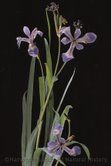Content

The Ware Collection of Glass Flowers at the Harvard Museum of Natural History
In addition to being highly-skilled craftsmen, the Blaschkas had a remarkable understanding of botany and were able to create specimens that were scientifically accurate. Created before fast image media, when only wax or papier-mache models were available, the life-sized models facilitated the teaching of botany to both students and the public. The models include remarkably accurate anatomical sections and enlarged flower and fruit parts. Since the ‘glass flowers’ are always in bloom, tropical and temperate species may be studied, and simply enjoyed, year-round.
The unique chemical and physical properties of glass lent themselves particularly well to model-making botanical specimens. Glass was the perfect medium with which to visually capture the translucence of a petal or the brittle strength of a cactus spine. The parts were shaped after the glass was softened by heat. Some models were blown. Colored glass was used for many; others were painted with a thin wash of colored ground glass or metal oxide(s) and heated until the material fused to the model. The Blaschkas continually experimented with new techniques to perfect colors and to incorporate other materials into the models, such as internal wire supports, glue and enamels.”
For more information on the permanent exhibit at the Harvard Museum of Natural History call: 617-495-3045 or visit their web site: http:www.hmnh.harvard.edu



